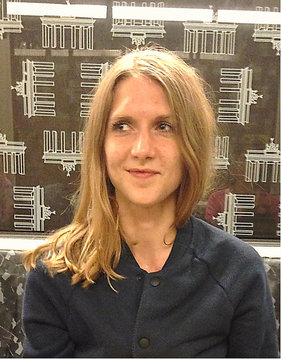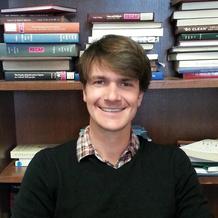Harlem's Missionaries to Africa: An Interview with Elisabeth Engel
Today on Gotham, editor Nick Juravich sits down with historian Elisabeth Engel, to speak about her experience writing her first book, Encountering Empire, on the lives of African American Missionaries in colonial Africa during the early twentieth century, and her thoughts on the subject since the monograph was published.
Nick Juravich: As a scholar of US history in Germany, can you tell us how you came to this particular project?
Elisabeth Engel: I was interested in studying African American reactions to the formal colonization of Africa since the Berlin conference of 1884/85. As an undergrad in North American history, I had read much about the central role Africa played as an idea for African American identity politics, life and culture. At the same time, I was fascinated with colonial history. I studied the British Empire, the Scramble for Africa, its interior exploration, European attempts to install colonial administration and was particularly taken by historiography that explored postcolonial approaches. Against these backgrounds, I began to wonder whether African Americans were involved with colonial processes, as Africa had so long been in their focus, and as historians increasingly talked about the US as an empire. I wanted to explore African American colonial encounters, with Africans and Europeans, and examine how these contacts shaped their image of Africa and their connections to the continent and to the people they had previously envisioned from a distance. The decision to use missionaries as a lens was due to this curiosity. African American missionaries were historical actors on the ground and experienced colonial power.
Juravich: Researching this book brought you to New York City (where we met), where you were able to access a particularly rich — and hitherto uncatalogued and relatively unknown — archive at the Schomburg Center for Research in Black Culture. Can you tell us how you found these papers, and how you worked with the folks at the Schomburg to access and make sense of them?
Engel: Finding this archive was really a decisive moment for pulling the project off. The papers you are referring to are the records of the missionary department of the African Methodist Episcopal Church (AME), the oldest independent black church in the U.S. To my own embarrassment, I admit that I had no clue that they existed. I learned about the collection only because my inquiry about mission-related material in the Schomburg Manuscript and Rare Books Division was rejected with the words “unfortunately the AME collection is unprocessed and therefore unavailable for use.” This left me with the exciting news that there was a massive collection of relevant sources (from follow-up correspondence, I learned that we were talking about 50 boxes of heretofore unseen primary materials) and the problem that accessing them was denied. I kept emailing, and tried to get support from various authorities to be granted access nonetheless. Eventually, Henry Louis Gates supported my request, and I could start working with these boxes. There was no finding aid, so I really went through most of them. Much of the papers were the correspondence of the AME missionary department, as well as reports and documentations of AME missionary work abroad. Even if it took certainly more time to filter out Africa-related papers, I benefitted from getting the bigger picture as well as unique source material. In exchange, I took notes on the material to help the staff to eventually put together the finding aid. As far as I know, the collection is still not fully processed, and it might take a while until its open to the public. I am greatly indebted to the Schomburg staff for letting me go through these materials ahead of time.
Juravich: The book offers an original look at African American missionaries in colonial Africa, whom you position neither as agents of white Western missionary or imperial designs, nor as proto-anti-colonial organizers. Instead, you offer "an entangled history of black emancipation and African colonization" that draws on transnational, diasporic, and Pan-African ideas but doesn't exactly conform to any existing frame. What you do give us is this new terminology — the "South Atlantic" — that combines Paul Gilroy's ideas about the "Black Atlantic" with a set of ideas about the "Global South," and also offers a sort of implicit counterpoint to the familiar formulation of the "North Atlantic" as a zone of imperial exchange and Anglo-American alliances and power. How did you come to this language, and how does studying the "South Atlantic" reshape our understandings of black transnationalism?
Engel: I first stumbled across the term “South Atlantic” in a survey of AME foreign missions from the 1930s. Interestingly enough, it was not used to refer to Southern states on the east coast of the US, but a much broader geographical region that stretched across the Atlantic. The report also expressed specific notions about the people, life-styles and challenges that were to be met by missionaries in this area. This prompted me to rethink the concept of the black Atlantic as a cultural space of Afro-diasporic interaction. Precisely, the idea of the South Atlantic showed that there were regional stratifications within it that did not date back to the transatlantic slave trade that hinged upon major trading posts in West Africa. There were also black interactions emerging that extended to the Southern islands and the Southern tip of Africa, and that were framed by late nineteenth and early twentieth century processes of European colonization. In South Africa — which quickly emerged as the most vivid mission field of the AME church — for example, colonial politics of racial segregation presented a emerged as a crucial condition that shaped African American interactions with Africans.
Importantly, the South Atlantic that African American missionaries talked about, thus was not solely their invention or a black transnational imagination. As I show in the book, there were other structures and institutions that specifically fostered South-Atlantic exchanges. The Protestant missionary movement began to promote, in the 1920s, the idea that “Negro Missionaries” from the post-reconstruction South were needed to Christianize Africa. Alongside this effort, the British Empire changed its immigration regulations to be able to differentiate African Americans from the US South from so-called Garvey-type Negroes who were associated with stirring anticolonial agitation. In the big picture, these findings suggest that black transnationalism was also a vision of white Christian philanthropists and colonial powers. They attempted to enable and constrain the circulation of certain kinds of African Americans and their ideas between the US South to sub-Saharan Africa. I think, acknowledging spatial formations like this helps us to trace the history of the idea of the ‘Global South’ further back than the era decolonization. From the perspective of the history of African American missions, we can bring into view that colonial and philanthropical actors assumed that African Americans had probed forms of progress and development in US South that could be transferred to other Southern parts of the world.
Juravich: Your book draws on many accounts written by African American missionaries, which you read as "autoethnographies" making sense of the encounter "between colonial others and black American selves." What's so interesting about that reading is that, at this precise moment, the locus of African America is shifting precipitously - from South to North, rural to urban - in the context of the Great Migration, as well as migration to US cities from the Caribbean. Harlem, of course, is a center of this shift, and it is where the AME moves its Missionary Department in 1926, at the height of the Harlem Renaissance. You've shared a fascinating excerpt about this move with us, but can you speak more broadly about how and why Harlem, as a place and an idea, comes to matter to these missionaries as they imagine and carry out their work on the African continent?
Engel: Broadly speaking, there are two levels on which Harlem comes to matter to the AME missionary movement in Africa. On the practical level, Harlem simply became the organizational nerve center of the enterprise. Since the AME Home and Foreign Missionary Department relocated to its new headquarter in West 116th st, it necessary focused the attention of its missionaries and congregations — African American and African alike — on this burgeoning site of African American political agitation and culture. All correspondence and publications were processed there, fundraising activities took place there, and all AME missionaries came through Harlem on their way to and back from their various African fields of labor. Thus, Harlem was placed at the center of the transnational endeavors of the African American missionary movement.
On the level of ideas, this insertion of Harlem into black missionary operations forced AME missionaries to navigate a complicated terrain. Harlem in the 1920s was the site at which the place Africa was to have in African American life and culture was vigorously debated, and at which positive identifications with the continent, as an ancient home or mother country, or a usable past or a place of future pan-African liberation, were promoted. AME missionaries for the most part rejected these imaginations. They distinguished themselves from those ideas by calling them lofty fantasies, and asserted their first-hand experience in the struggle about who had the authority could speak for Africa. The anti-colonial agitation of Marcus Garvey constituted the biggest problem. His idea to overthrow colonial rule in Africa threatened the AME missionary project, as colonial governments denied permissions to enter their territory to suspicious black subjects from the US. AME missionaries thus associated ideas of home with Harlem, and repudiated anti-colonial and romanticizing views of Africa. Their idea of Africa was that it could not be known except for the specific places and people an AME missionary had visited. This view was expressed by adopting the ethnographical forms and methods of description that Western ethnographers had developed. AME mission work characterized by staying away from political agitation, even if many Africans who were raised in the AME milieus eventually became important leaders in the African anti-colonial struggle.
Juravich: It's now been almost two years since this book was published. How has it been received? Are there ideas or challenges you are still thinking about, or that reviewers have raised, which you hope to revisit down the line?
Engel: Writing this book involved of course pragmatic choices that led me to exclude aspects that I found in the sources, and that I would like to explore further. I have in part returned to these aspects in articles, which hopefully appear next year. One aspect in the primary sources that I now investigated more closely was AME missionary photography. I think photography, with its reputation to produce incorruptible and unbiased representations of Africa, was one of the strongest interventions AME missionaries could make in the world of African American Africa-imaginations. Another one is the deep fascination that white missionaries and colonial powers developed for Booker T. Washington and his educational work with African Americans in the US South. While Booker T. Washington’s popularity faded in the US with the rise of the Garvey movement, he received an enormous attention in global colonial contexts. I am currently exploring further how the idea of the ‘American Negro,’ modeled upon Washington, informed ideas progress and development that were endorsed by missionary and colonial actors in the interwar years.
Elisabeth Engel is a Research Fellow at the German Historical Institute in Washington, DC. She is an historian of modern North America, specializing in colonial and racial entanglements and the history of risk and uncertainty in the Atlantic world.
Nick Juravich is the Andrew W. Mellon Postdoctoral Fellow in the Center for Women’s History at the New-York Historical Society. His dissertation at Columbia University explored the lives and labor of working-class women as parent educators in the public schools of New York City.

